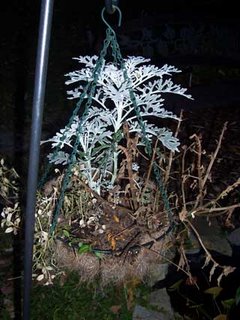Not So Cold Hardy Killers: Why Cold Kills Some Plants and Not Others
 Did you ever wonder why some plants can survive cold temperatures while others curl up, roll over, whimper piteously and then die?
Did you ever wonder why some plants can survive cold temperatures while others curl up, roll over, whimper piteously and then die?
I mean you could just say that they just can’t take the lack of heat, but that doesn’t really explain all that much, now does it? That’s like saying, Oprah loses weight and gains it back because she diets and then binges. It leaves out the whole Stedman/Bob Greene cycle of drama that we all know really drives that whole process.
So how come plants die in the cold? Why is it this killer spares the life of one botanic and threatens the life of another? We know it’s not random acts of violence, so what is it?
On an upper level, it comes down to the same thing all of us blame our problems on… genetics. Too short, too tall, too fat, too skinny, too cold susceptible. Blame it on heredity. The judge will believe it.
On a more granular level, the genetics that causes one plant to die while another can weather the winter has to do with an internal trigger inside a plant that prepares it for the cold.
Much like plants know when to change the color of their leaves and let the leaves fall, a plant also knows when to bulk up for the winter too. The same things that can trigger a plant to change colors also can trigger the plant to start thickening the walls of its cells.
Then the cold comes. The next thing you know water is freezing and there is ice everywhere. Plants, much like us humans, are made up mostly of water, except plants don’t have a convenient internal heating system that keeps them from freezing. The water inside a plant will freeze and will form ice crystals. Very pointy crystals.
On top of that (think back to grade school science class) water expands when it freezes, which pushes those crystals into the cell walls. If the plant has had sufficient time to prepare and has been blessed with the genetic ability to thicken its walls, the cell walls will not puncture when the plant freezes.
Some plants also help defend themselves against ice crystals by preventing the water in their systems from freezing at all or by pushing the water out of the cells themselves. No ice crystals in the plant cells, no chance of popping the cell.
But the colder it gets and the longer it stays cold, the more chance a plant has that the ice crystals will form and will pop the cell walls. Very cold hardy plants can develop very thick cell walls and will take action to keep as few ice crystals from forming as possible.
Plants that come from tropical climates have had no hereditary need to prepare for winter and so don’t have this crucial adaptation. The slightest bit of ice crystal and their cells are popping like a bunch of balloons trying to make love to a porcupine. It just ain’t pretty.
The thickening is also why new growth, flowers and seedling tend to be more susceptible to cold as well. New growth and seedlings are made up of immature cells which have not had a chance to thicken their cell walls and the cells of many flowers on an otherwise cold hardy plants just don’t have the ability at all. One late cold snap and the plant will be fine but you can kiss those pretty buds good bye for the year.
The same goes for hardening off. If you don’t give a plant a chance to develop thicker cell walls by exposing it to small amount of lower temps, it won’t be able to defend itself against the cold.
Once the cell wall is punctured the cell can no longer retain water (boy, I wish I had that problem). It simply can’t keep its act together and begins to die. That’s why a plant that gets hit by unexpected cold may look fine at first but will slowly wilt and eventually turn black.
All of this is nice to know but it does not fix the fact that I still have a yard full of dead plants. Damn cold.
